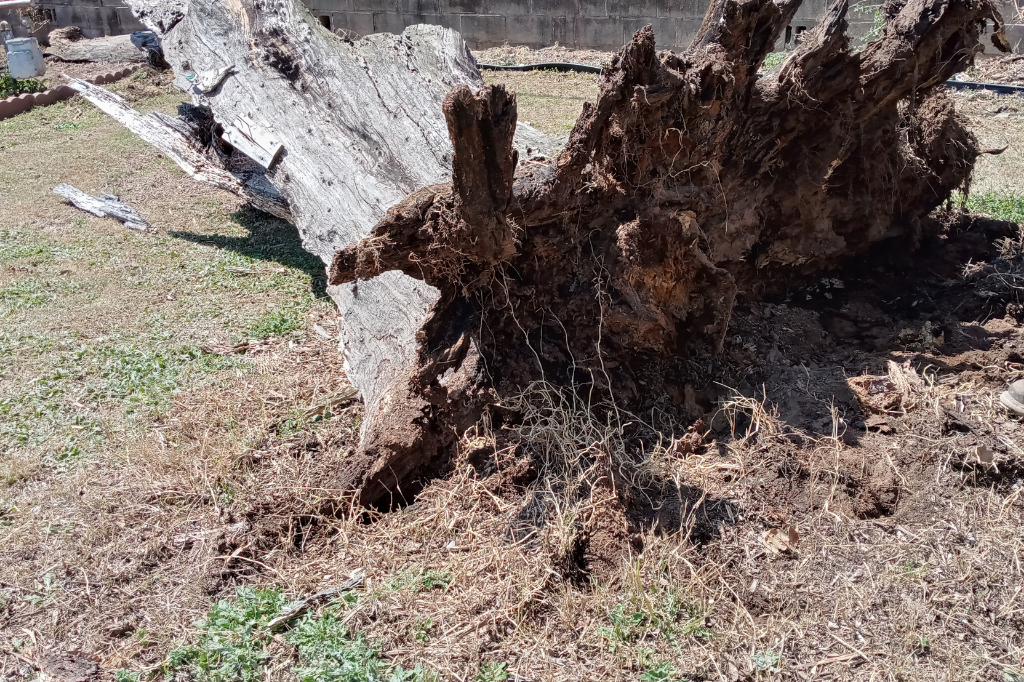Year 1: Installing the Raised Beds and Picking a Method for the Madness
Urban Homesteading requires a LOT of research and planning before it looks like anything is really starting to happen. Are you going to do row gardens? Container gardens? Raised beds? What about pest control?
Going into placing the garden I knew we were going to need a plan – and preferably a gardening method that came with lots of advice for a newbie.
Goals & Limitations
To help figure out what kind of method we were looking for first we had to figure out what our goals and limitations were for the garden.
As a stay-at-home mom I can take advantage of the workweek to get things done in the yard, but the trade-off is that everything is done with the assistance of my three-year-old.
There’s also the fact that I’m 7 months pregnant, so it’s safe to say everything takes me at least twice as long to get done!
I know how hard postpartum can be so I want everything that can possibly get done to be done by the end of May. That means beds in, the first round of plants in, and as many seeds started for late summer planting as possible.
It also means making sure that I have systems in place for when our baby girl makes her way earthside.
Ideally, I want to have raised beds (so I’m not trying to babywear, chase my toddler, and work on the ground) and a weed prevention method around the beds we’re installing (weed-eating around all the beds every week in the summer sounds…unlikely).
I know what I want – so it’s time to find a method that will support my goals for the summer.

Enter Square Foot Gardening
If you aren’t familiar with Square Foot Gardening (or SFG) it’s a planting system developed by Mel Bartholomew in the mid-90s using raised beds and a grid system based on the square foot.
Square foot gardening prides itself on being more efficient and more effective than traditional gardening. It’s also especially friendly for beginners, children, and the elderly.
Minimal space requirements, accessible beds, beginner-friendly, and actively designed to produce as much food as possible for the space? It seems like a perfect choice for our first year!

Alterations
The SFG system encourages beds that are 6″ deep and filled with ‘Mel’s Mix’ – a combination of vermiculite, peat moss, and compost in equal parts.
I’m all for giving that a try at some point (maybe I’ll set aside a garden bed for Beansprout next year) but this year my budget is more ‘dirt’ than ‘specialty soil mix’ so alterations must be made.
To make the system fit our budget we’re doing 12″ deep beds filled with gardening soil from a local supplier that sells in bulk.
I think that’ll work out just fine but if it all fails horribly, well, I certainly can’t blame the method.
Where?
The next question is where are we going to put our garden. We’re growing a lot of veggies so we’ll need mostly full sun. After doing some research it looks like we want the beds arranged facing north-south to maximize the daylight.
I’m planning on keeping to the backyard, for the illusion of privacy and to keep the neighbors happy, but besides that we have a fairly flexible space.
How much?
Related to the where-should-they-go question is the how-many-beds-do-we-want question. It’s all well and good to find the perfect place to put a garden bed but it’s useless if I end up with beds scattered all over my yard!
So, how many beds?
According to the SFG book that I got from my local library to grow enough food to feed two adults and also preserve food for the winter I’m going to want 64 sq ft.
The recommended bed size with SFG is 4′ x 4′, or 2′ x 8′ if you’re planning to take advantage of the vertical space in your yard.
Since my tomatoes, pumpkins, zucchini, cucumber, watermelon, and beans are all going to need vertical space we’re opting to do two 4′ x 4′ beds and two 2′ x 8′ beds. I think we’re going to overflow into the border flower beds a bit for herbs, okra, and corn too.
All told it looks like the back corner of our yard will be perfect.

The Yard
The back corner of our yard has some fun features that came with the house such as mattress-spring-honeysuckle-bush and city-gas-main which make it a pain in the butt to mow in the summer.
To help make things easier for ourselves going into the summer we’ve decided to mark off the entire back quarter of the yard and mulch the whole thing.
We found out last year that the city will provide mulch for free, as long as you bring your own trailer to fill up, so mulch is a surprisingly affordable option!
We also found out last year that mulch alone will not keep weeds at bay.
After some comparative shopping around town, I found a good deal on some weed cloth to lay down under the mulch.
(Ace Hardware had it for 8$ per 150 sq ft versus Home Depot and Lowe’s who were asking 22$ per 150 sq ft).
But that still left the question of how to keep the mulch contained.
Enter Facebook marketplace and weird boomer solutions!

Wait, let me go back a bit, last year when I was digging up the yard I kept finding scalloped brick edging buried in the yard.
It turns out that the previous owner solved the issue of random holes in the yard by filling them in with brick edging. I don’t get it, but I dug it all up and set it aside for later.
Now back to my mulch dilemma, I had all this pretty brick edging which would be perfect to contain the mulch but there wasn’t enough to block off an entire corner of my yard. At 2$ a foot buying it new was off the table.
On a whim I tried searching Facebook Marketplace and hallelujah!
I found a woman who was getting rid of about 30 feet of the same brick edging.
Ironically, she had also dug it up from her yard where a previous owner had used it to make a patio. Amazing!
All I had to do was pick it up.
Plot Twist: New Limitations
It was at about this point that I got a diagnosis of Symphysis Pubis Dysfunction (SPD).
SPD is fairly common during pregnancy with as many as 80% of women developing it in at least one of their pregnancies (at least in the UK where they have healthcare and can track these things).
It isn’t threatening to me or the baby as long as I follow the guidelines. Which is wonderful!
Except that the guidelines are: no lifting, no pushing, no pulling, no squatting, no lunging, keep your weight balanced evenly between both legs, and do NOT over-exert yourself.
This means that the difficulty level of this project just went up a few notches.
(I still went to pick up the brick edging though – it was a total deal!)

Marking Out the Garden
With firm instructions for me not to do anything physically taxing (a big challenge for me!), it was time to get the garden area marked off.

We started by marking out the spaces for our raised beds with yarn and stakes and then repeated the process to get a nice right angle for our brick edging.

After laying all the edging end-to-end to make sure we had enough (we did!) Nathan went through and dug a little trench along our yarn line.
I followed behind burying the edging about 2″ down to keep it from falling over too easily.
Nathan built the beds, Beansprout and I laid down the weed cloth, and all together we got the beds in place and the area prepped for mulch in about two weeks.

With a Little Bit of Help
Luckily for me, or for Nathan, my dad was willing to come over this weekend to help us get the mulch in.

It took a full trailer of mulch to cover the garden area and most of the afternoon.
I know Nathan is glad he didn’t have to unload the whole thing alone! Beansprout helped out by riding on their shoulders as they made trips between the trailer and the garden.
And I helped out by raking the mulch flat and making sure everyone had sweet tea and water. Can you tell we’re in the midwest?

Surprise Project Addition
When we moved into our house we had a large tree in the backyard that was dead and gone. Over the last year, it’s deteriorated past the point of being safe to stand.
We knew it was getting bad, so we’ve been planning to take it down with a chainsaw. It turns out we didn’t need to do quite that much planning!
Nathan and my dad got to talking about it and decided to try just pushing it over – and it worked!

We’re still going to need a chainsaw to break up the tree but knowing it won’t be falling over and crushing anyone any time soon is a weight off my mind.
All Done for Now
With the area marked off, the raised beds in, and the whole area weed clothed-and-mulched the garden is officially in!

Now, we just need the dirt, the plants, and the cattle panels for the trellises.
Well, we’re halfway there at least! I can’t wait to see it once everything is in place – I’m itching to get planting.
What do you think?
Do you think raised beds are the way to go for accessibility? Or do you prefer row gardening or containers?
Comment below and let me know!
To start at the beginning of our urban homesteading journey check out the post Starting Our Urban Homestead or for ideas on where to start with your own urban homestead check out How to Start an Urban Homestead
To see what happens next head over to the May Update








